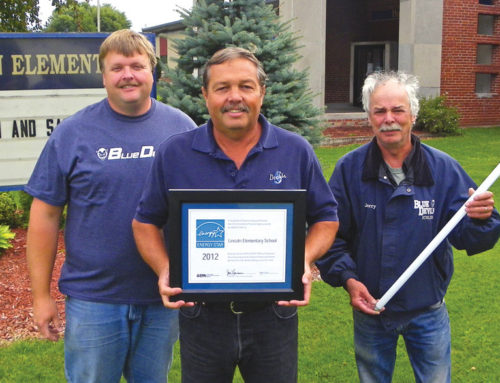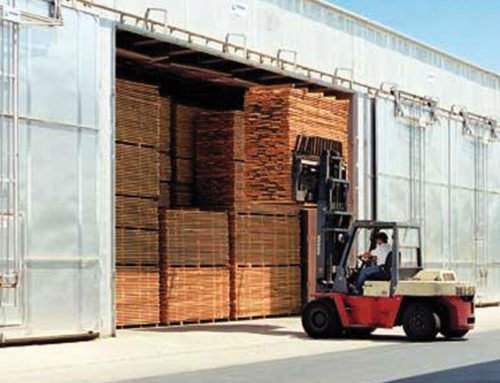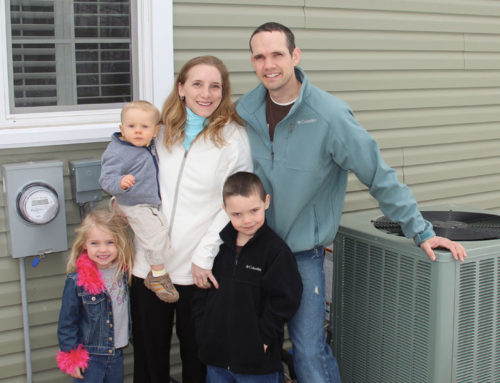Every dairy cow carries an energy price tag. Farmers pump water—and $2.6 billion in energy dollars—to boost crops. At the end of the day, energy, both direct and indirect, accounts for 13 percent of production expenses on an average farm, so it makes sense that more farmers are turning to energy efficiency to help their bottom lines.
Electricity powers a farm’s heating (water, space, heat lamps), pumping (irrigation, water wells, manure lagoons), refrigeration, ventilation, fan (drying grains, aeration) and lighting operations. Material handling—such as feed augers, manure conveyors, milking, and egg conveyors—also drain resources.
The American Council for an Energy Efficient Economy estimates farmers could save $88 million annually by investing in efficient motors and lighting. So, how can Michigan farmers reap efficiency benefits?
Local electric cooperatives provide rebates for agricultural members (and other business and residential members) who make electricity-saving improvements through the Energy Optimization Program (visit michigan-energy.org or call 877-296-4319; Cherryland Electric Co-op members, call Member Services at 231-486-9200 or 800-442-8616).
EnSave, a national agricultural energy efficiency firm, also provides a pyramid of steps farmers can take to cut down energy use. The greatest savings come from deploying more efficient equipment, but behavioral changes and a simple analysis of how energy is consumed can result in significant savings, too.
Equipped to Save
Each farm—dairy, poultry, beef, hog or crop—offers opportunities for efficiency improvements. For example:
Clean equipment: Removing dust, soot and debris will allow equipment to do more work with less effort, therefore extending its life and reducing energy use.
Inspect equipment regularly: Replace parts that show excessive wear before they break and cause irreparable damage. Plug leaks: Be it a pinprick hole in a hose or a drafty barn, leaks waste money, fuel and electricity.
Remove clutter: Hoses should be flushed regularly to clear debris. Ensure that fan and motor intakes and exhausts remain clear for maximum circulation and efficiency.
Light Lessons
After tuning up your equipment, check the lights. Light your work areas, not entire buildings, and install dimmable ballasts to control lighting levels. Use daylight whenever possible.
The type of light used also makes a difference. While useful as a heat source in limited situations, such as keeping water pumps from freezing in winter, incandescent lightbulbs only convert 10 percent of the energy used into light. The rest is given off as heat. Consider these energy-saving options, as compared to incandescents:
- Halogen incandescents use 25 percent less energy and last three times longer than traditional incandescent bulbs;
- Compact fluorescent lightbulbs (CFLs) use 75 percent less energy and last up to 10 times longer;
- Light-emitting diodes (LEDs) use 75 to 80 percent less energy and last up to 25 times longer;
- Cold cathode fluorescent lamps (CCFLs) last up to 25 times longer and offer the same efficiency as CFLs.
- T-8 and T-5 fluorescent lights with electronic ballasts operate more coolly, produce more light per watt, generate less noise (without flickering), and offer better color rendering and energy savings.
Harsh Surroundings
Before buying new equipment or lighting, make sure your gear can survive the farm’s rough environment—fluctuating temperatures, wet locations, long operating hours, and large loads. Confirm the manufacturer’s specifications that the unit is intended for the environment, and review the warranty and conditions. Make sure the way you plan to use it will not void the warranty.
Look for knowledgeable suppliers and installers familiar with the local climate and your needs. Typically, farms need more rugged devices than what’s available at a low cost from a retail or big-box store.
Seeds of Change
- For regional or crop-specific efficiency methods, use the USDA Natural Resources Conservation Service energy calculators at energytools.sc.egov.usda.gov. Assess how much energy your farm needs for animal housing, irrigation and tillage, and discover ways to cut costs. Dairy farmers may also visit usdairy.com/saveenergy.
- Funding for efficiency upgrades is available through the Rural Energy for America Program (REAP). Since 2008, REAP has funded over 6,800 renewable and energy efficiency grants and loan guarantees as well as 600 farm energy audits. Get details at rurdev.usda.gov>Energy>Rural Energy for America Program.
- Farmers can also apply for financial and technical/energy management help from the Environmental Quality Incentives Program (nrcs.usda.gov>Programs>Financial Assistance>Environmental Quality Incentives Program).
Sources: American Council for an Energy Efficient Economy, EnSave, U.S. Natural Resources Conservation Service, Innovation Center for U.S. Dairy





